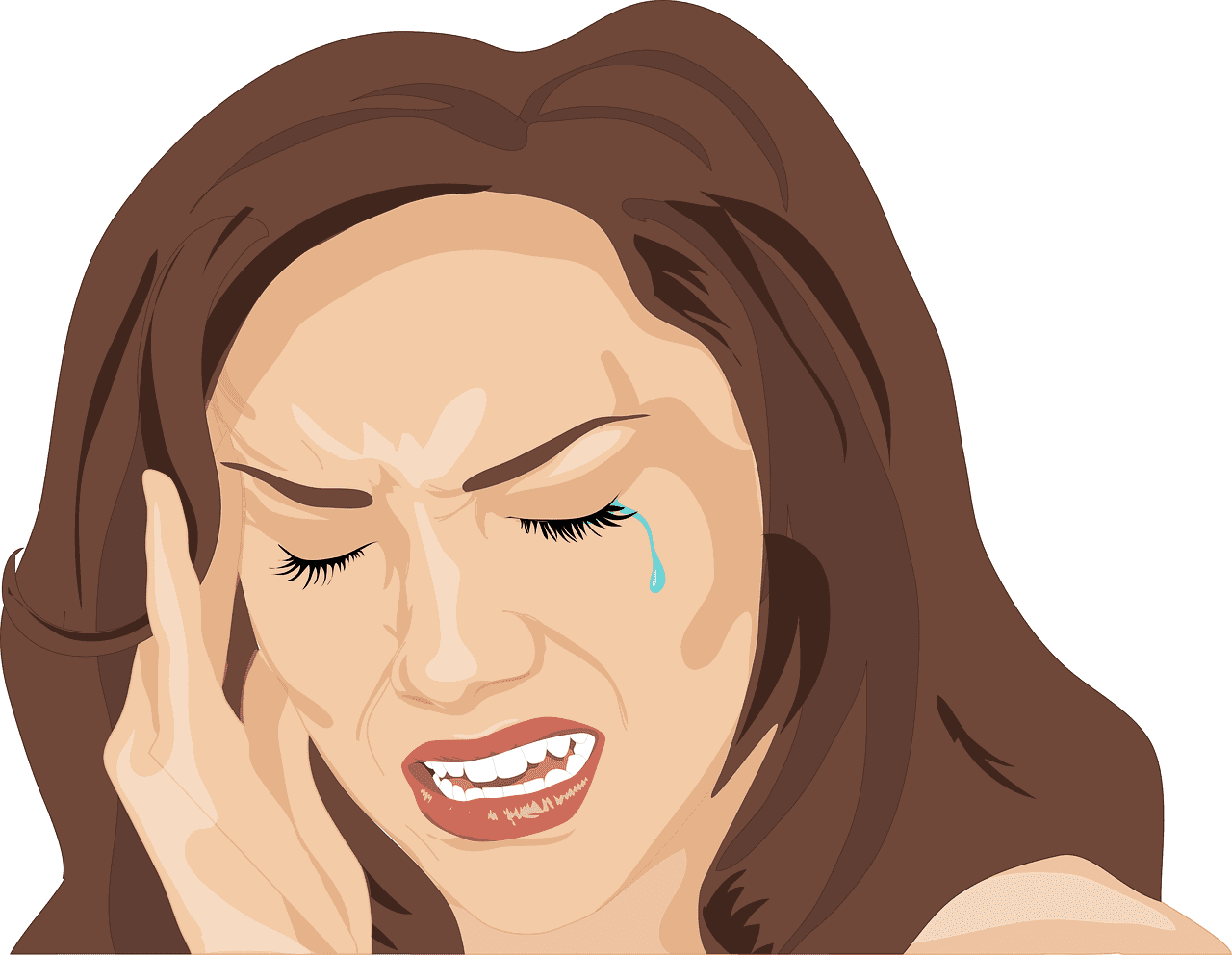Headaches can be the worst kind of pain that people suffer from. There are several types of headaches and two of them are Migraines and Cluster headaches. Although they cause extreme pain in the head, they have some differences.
Both Migraine and Cluster headaches have different durations, frequencies, and the areas of the head they affect.
Key Takeaways
- Migraines are characterized by throbbing pain on one or both sides of the head, while cluster headaches are characterized by intense, piercing pain on one side.
- Migraines are accompanied by nausea, sensitivity to light and sound, and visual disturbances, while cluster headaches may cause tearing of the eyes and a stuffy or runny nose.
- Migraines can last from a few hours to several days, while cluster headaches last from 15 minutes to 3 hours and occur in clusters over several weeks or months.
Migraine vs Cluster Headache
The difference between Migraine and Cluster headache is that Migraines is for a longer period of time whereas cluster headaches last for about 30 -90 minutes. A migraine headache is a severe pain in the head that is more likely to stay a day if left untreated. Cluster headache attacks can happen in cyclic times, and one can get up to 8 clusters in a day.

A migraine headache is an intense pain that occurs in the head and can have a long duration of up to a day. It can occur anywhere in the head, whether it’s front of the head, back, or any side of the head. It causes nausea, vomiting, dizziness, and even temporary vision loss.
There is a reason why cluster headache is called so because of their pain severity and frequency. Cluster headaches are severe pain in the head that occurs at cyclic times and can happen any time in a day. It happens mainly on one side of the head which is around the eye or the temple.
Comparison Table
| Parameters of Comparison | Migraine | Cluster Headache |
|---|---|---|
| Definition | Migraine is severe pain on one side of the head. It has other symptoms also, in addition to head pain. | Cluster headaches are also painful headaches that are shorter in duration and mainly happens around and behind the eye. |
| Symptoms | Symptoms include nausea, pain in the temples, pain behind eyes and ear, vomiting, seeing spots and zigzag lines, temporary vision loss, etc. | Symptoms include pain around and behind the eyes, runny, congested nose, drooping eyelid, sweating, changes in heart rate. |
| Causes | Causes can be hormonal, emotional anxiety, or taking certain preservatives like MSG, contraceptives, menopause, etc, | This can be caused by bright lights, altitude, physical exertion, and also alcohol can make it worse. |
| Duration | It can occur for a longer period of time, from 4-72 hours. | It is of less duration and can last about 30-90 minutes. |
| Prevalence | It is more common in women than in men. | It is more common in men than in women. |
What is Migraine?
Migraine is a type of headache in which people suffer from intense and severe pain in the head. The pain can last a long day, and the pain doesn’t go away completely.
The severity of pain over the course can vary with the location of the pain in the head. Apart from the pain in the head, it also has other symptoms like nausea, vomiting, temporary vision loss, seeing the zigzag lines and flashing lights, etc.
The frequency of this pain can vary from one to two times a month. It can happen in many locations, like developing in the back or front of the head, behind the eye, just one side of the head, or maybe the entire head
There are many causes and triggers of migraine, such as hormonal change, stress, alcohol use, emotional anxiety, or taking certain preservatives like MSG or contraceptives, etc.
The risk factors include age, gender, family history, or hormonal change. Generally, migraine is more common in women than in men.

What is a Cluster Headache?
Cluster headache is a type of headache that is for a shorter period of time, between 30 – 90 minutes. It occurs on the one side of the head, mainly around the eye or the temple.
Unlike Migraines, the frequency of cluster headaches can go 8 times in a day with short intervals. The symptoms include redness and watering of the eye, nasal congestion, and drooping of the eyelid.
The main reason why it is called a cluster is that it occurs at cyclic times. There is pain relief in between the periods. The risk factors can be age, alcohol, and smoking. It commonly occurs in men than in women.
People get this headache during the same season each year when it is triggered. It is caused by bright lights, physical exertion, or even altitude. Moreover, this severe headache can cause aggressive behaviour in a person. They tend to become very agitated and restless.

Main Differences Between Migraine and Cluster Headache
- Migraine is just more than a headache that can last up to a day if left untreated, whereas Cluster headaches are headaches that last up to 30-90 minutes.
- The frequency of Migraines is one or two attacks per month; some can have it more frequently, whereas Cluster headaches frequency ranges from one every other day and can have it up to 8 times a day.
- In migraines, the location of the pain varies and can happen anywhere in the head, but Cluster headaches happen only on one side of the head, mainly at the temple or around the eye.
- Migraines can cause nausea and vomiting, whereas Cluster headaches can cause redness of the eyes, congestion in the nose, etc.
- The risk factors for migraines include Family history, hormonal changes, Age, or Gender, whereas risk factors for Cluster headaches are Gender, Age, Smoking, altitude, or Physical exertion.

- https://headachejournal.onlinelibrary.wiley.com/doi/abs/10.1111/j.1526-4610.1978.hed1801009.x
- https://onlinelibrary.wiley.com/doi/abs/10.1111/j.1600-0773.2001.890201.x

This article has provided a comprehensive and insightful comparison between migraines and cluster headaches.
This comparison effectively highlights the distinct characteristics of migraines and cluster headaches, which is essential for those affected.
I completely agree. The information presented is very educational.
The comparison table offers a concise overview of the differences between these headaches.
As someone who suffers from migraines, I find this comparison very beneficial in understanding the nuances of these headaches.
It’s really informative and helpful, especially for those experiencing these headaches.
I appreciate how detailed and clear the explanations are in this article.
The clear distinctions between migraines and cluster headaches outlined in this article are highly informative and beneficial.
This information is valuable for differentiating between these severe headaches and seeking appropriate care.
Absolutely, it’s essential to recognize the differences for effective management.
Yes, this article provides a comprehensive understanding of the topic.
I suffer from frequent migraines and it’s really helpful to identify the differences between these two types of headaches.
Yes, it’s very useful information. Thank you for sharing!
I agree, this comparison is very insightful.
Glad to have learned about the distinctive features of migraines and cluster headaches from this article.
It’s indeed well-detailed and informative.
This article offers valuable insights into the symptoms, duration, and prevalence of migraines and cluster headaches, which is incredibly helpful.
Definitely, the risk factors section provides important context for understanding these headaches.
I found the information about migraine triggers and risk factors quite enlightening.
Understanding the differences in the symptoms and causes is crucial for accurate diagnosis and treatment of these headaches.
Agreed, the comparison table is particularly helpful.
Definitely, it’s important to be well-informed when it comes to such health issues.
I am impressed by the level of detail and clarity in the comparison of these two types of headaches.